Melt-in-Your-Mouth Custard Cookies Recipe: Soft, Sweet & Irresistibly Easy
Prepare to fall in love with these extraordinary Custard Cookies. Each bite of these delightful vanilla-infused treats offers a tender, melt-in-your-mouth texture that is simply irresistible. With a delicate sweetness and a light, comforting vanilla flavor, they are poised to become your new favorite cookie.
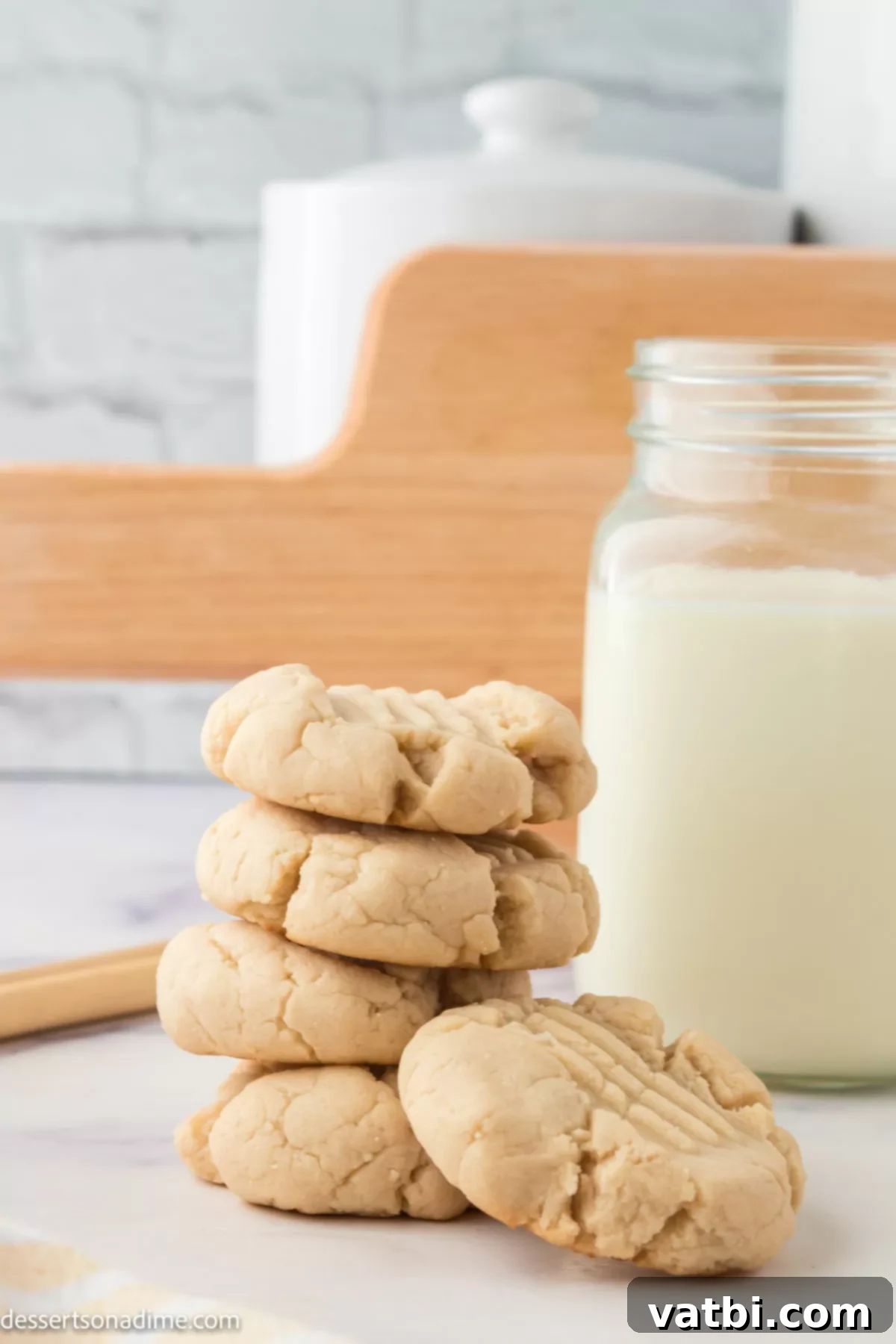
This easy cookie recipe transforms classic shortbread into something truly special by incorporating custard powder. This secret ingredient is what gives these cookies their distinctive, rich, and creamy vanilla pastry cream-like taste and incredibly soft texture, setting them apart from your average cookie.
Despite their gourmet taste and elegant appearance, these custard cookies are surprisingly simple to prepare. They boast a subtly crispy edge that gives way to a wonderfully soft and tender interior. We began making these a few years ago, and they quickly earned their place as a cherished family favorite. For those who enjoy a variety of shortbreads, I also highly recommend trying my Chocolate Dipped Shortbread Cookies and Gluten Free Shortbread Cookies.
This egg-free recipe uses readily available pantry staples, making it an effortless baking project you can whip up in minutes. You’ll appreciate that these cookies are not overly sweet, striking a perfect balance for those who prefer a less intense sugary treat. Yet, they possess just enough sweetness to delightfully satisfy any craving.
Table of contents
- Why We Love This Recipe
- Key Ingredients for Perfect Custard Cookies
- Variations and Substitutions to Try
- How to Make Custard Cookies Step by Step
- Storage and Freshness Tips
- Can You Freeze Custard Cookies?
- Expert Pro Tips for Baking Success
- More Easy Cookie Recipes to Explore
Why We Love This Recipe
Once you experience the sheer ease and delicious outcome of these custard shortbread cookies, you’ll understand why they’re so beloved. While they might sound like a creation from a high-end bakery, the recipe is incredibly straightforward, designed for home bakers of all skill levels. They look elegant and taste phenomenal, tricking everyone into thinking you spent hours in the kitchen or picked them up from a specialty shop.
The magic behind their unique flavor and texture lies in the vanilla custard powder. This ingredient, often used as a thickening agent for puddings and custards, imparts a rich, authentic vanilla pastry cream flavor to the cookies. It contributes to their signature softness and helps achieve that characteristic light golden color. It’s a simple addition that elevates a basic cookie to a gourmet dessert. The delicate balance of flavors makes these cookies perfect with a cup of tea, coffee, or as a standalone sweet treat.
Key Ingredients for Perfect Custard Cookies
Crafting these delectable custard cookies requires just a few basic ingredients, most of which you likely already have in your pantry. Each component plays a crucial role in achieving the desired taste and texture.
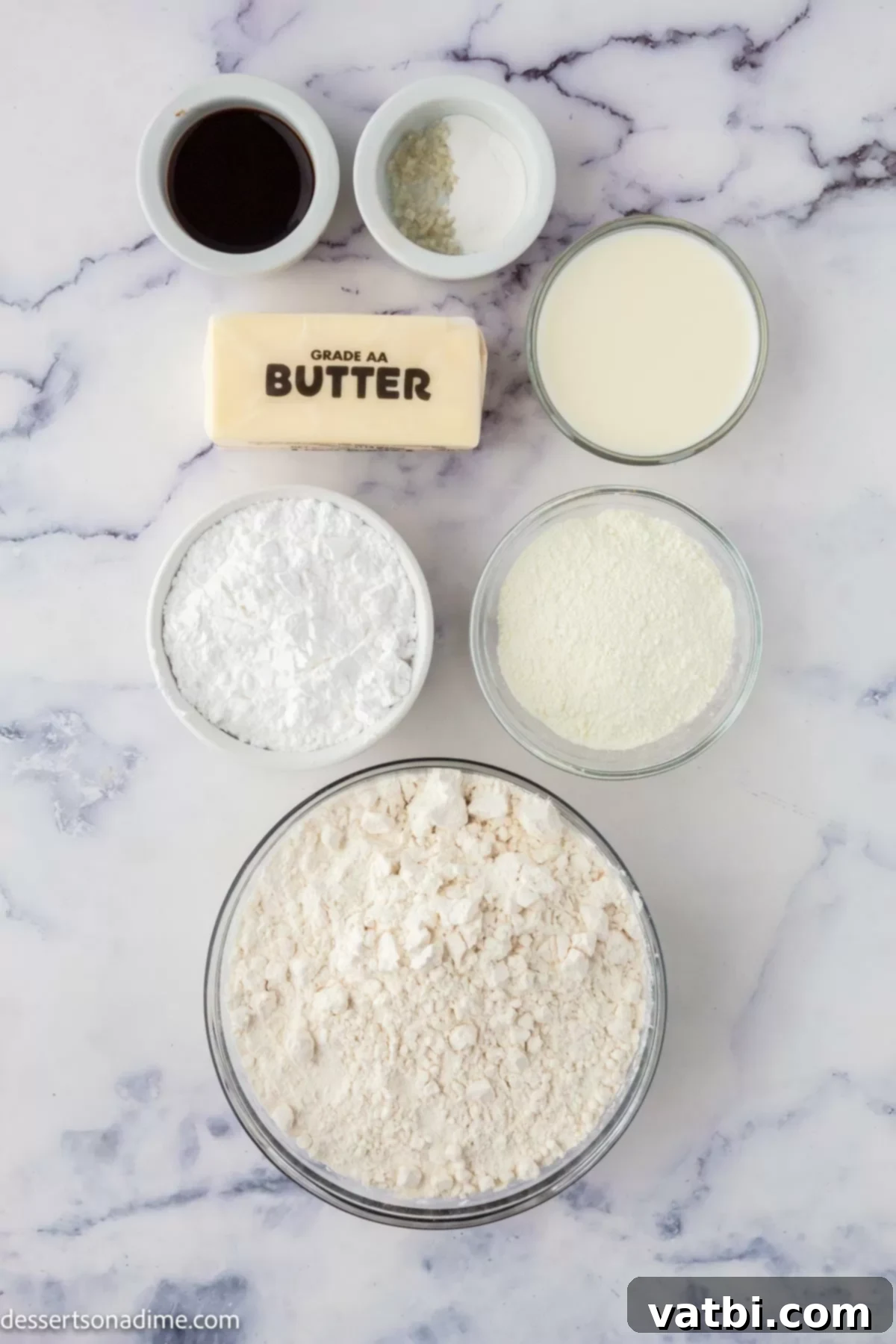
- All-Purpose Flour: This forms the primary structure of your cookies. For accurate measurement and consistent results, always spoon the flour into your measuring cup and then level it off with a straight edge. Scooping directly from the bag can pack too much flour, leading to dense, dry cookies.
- Custard Powder: The star ingredient! It’s a blend of cornstarch, vanilla flavor, and often a touch of yellow food coloring. This is what gives the cookies their signature rich vanilla pastry flavor and contributes to their incredibly tender texture. It’s widely available in most grocery stores in the baking aisle.
- Baking Powder: A small amount helps these cookies achieve a slight lift and a tender crumb, preventing them from being too flat or dense.
- Salt: Essential for balancing the sweetness and enhancing all the other flavors in the cookie. Don’t skip it!
- Butter: Use unsalted butter, softened at room temperature. Butter is crucial for flavor and for achieving that melt-in-your-mouth texture. Room temperature butter creams beautifully with sugar, incorporating air and creating a light dough. Margarine can be substituted but will alter the flavor and texture significantly.
- Powdered Sugar (Confectioners’ Sugar): Unlike granulated sugar, powdered sugar dissolves more completely into the butter, resulting in a smoother dough and a more tender, less crumbly cookie. Always sift powdered sugar to remove any lumps, ensuring a uniform cookie dough.
- Vanilla Extract: Pure vanilla extract is highly recommended for the best flavor. It complements the vanilla notes from the custard powder, deepening the overall aroma and taste. For an even lighter, purer white cookie, you can opt for clear vanilla extract.
- Milk: A small amount of whole milk adds richness and helps bind the dough together, ensuring it’s pliable and not crumbly. You may not need all of the suggested amount, so add it gradually until the dough reaches the right consistency.
The complete list of ingredients with precise measurements can be found in the recipe card at the bottom of the page.
Variations and Substitutions to Try
While the classic custard cookie recipe is perfect as is, there are several ways to adapt it to your taste or to accommodate ingredients you have on hand. Don’t be afraid to get creative!
- Cornstarch Substitute: If custard powder is unavailable, you can substitute it with an equal amount of cornstarch. While the cookies will still be delightfully soft and tender, they will lack the distinctive vanilla pastry cream flavor that custard powder provides. You might want to increase the vanilla extract slightly in this case.
- Vegetable Shortening: For a slightly different texture, or if you’re out of butter, vegetable shortening can be used as a substitute. Be aware that shortening can cause the cookies to spread out more during baking, and the flavor profile will be less rich than with butter.
- Almond Flour Substitution: To add a subtle nutty flavor and a slightly different texture, you can substitute a portion of the all-purpose flour with almond flour. Start by replacing about ¼ to ½ cup of all-purpose flour with almond flour and see how you like the results. This can make the cookies even more tender.
- Flavor Boosters:
- Citrus Zest: Add 1-2 teaspoons of lemon or orange zest to the dough for a bright, refreshing twist.
- Spices: A pinch of cinnamon or nutmeg can introduce a warm, comforting note to the vanilla flavor.
- Chocolate Chips/Chunks: Fold in mini chocolate chips or finely chopped chocolate for a delightful textural and flavor contrast.
- Toppings and Glazes:
- Simple Glaze: Drizzle cooled cookies with a simple glaze made from powdered sugar and a splash of milk or lemon juice.
- Chocolate Drizzle: Melt some chocolate chips and drizzle over the cooled cookies for an extra layer of indulgence.
- Sprinkles: Add festive sprinkles to the dough before baking or on top of a glaze for special occasions.
- Gradual Milk Addition: Remember to always add the milk gradually, one tablespoon at a time, until the dough comes together and is no longer crumbly. The exact amount can vary based on humidity and how accurately your flour was measured. The goal is a soft, pliable dough.
- Cool Completely Before Storing: No matter what variations you try, always ensure your cookies are completely cool before storing them to prevent them from becoming soggy.
How to Make Custard Cookies Step by Step
Baking these delightful custard cookies is a straightforward process. Follow these simple steps for perfect results every time.
Step 1 – Prepare Your Oven: Begin by preheating your oven to 350°F (175°C). This ensures the oven is at the correct temperature when your cookies are ready to bake, which is crucial for even baking and proper texture. While the oven preheats, you can start preparing the cookie dough.
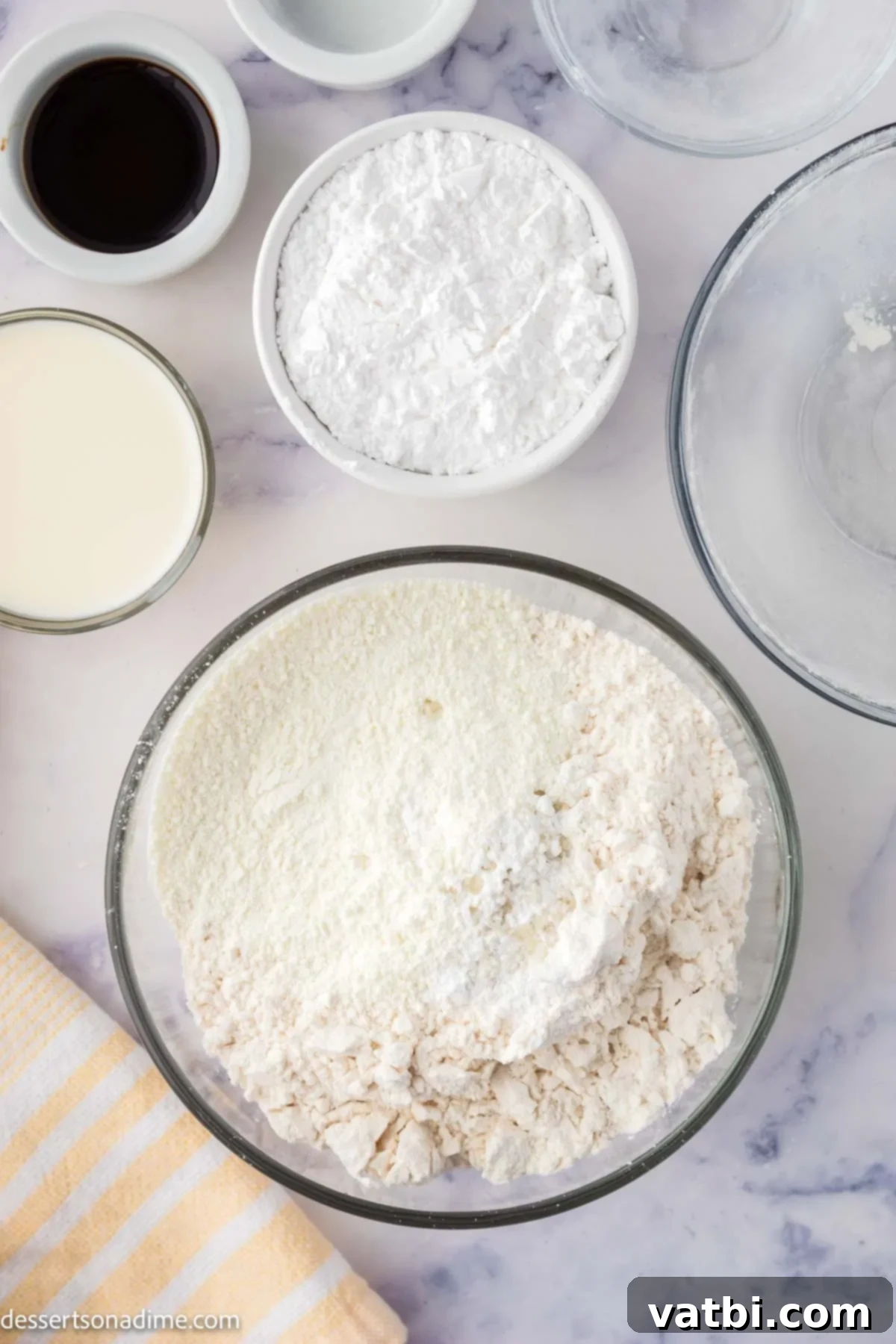
Step 2 – Combine Dry Ingredients: In a medium-sized bowl, whisk together the all-purpose flour, custard powder, salt, and baking powder. Whisking ensures these ingredients are thoroughly combined and evenly distributed, which is important for the cookie’s texture and rise.
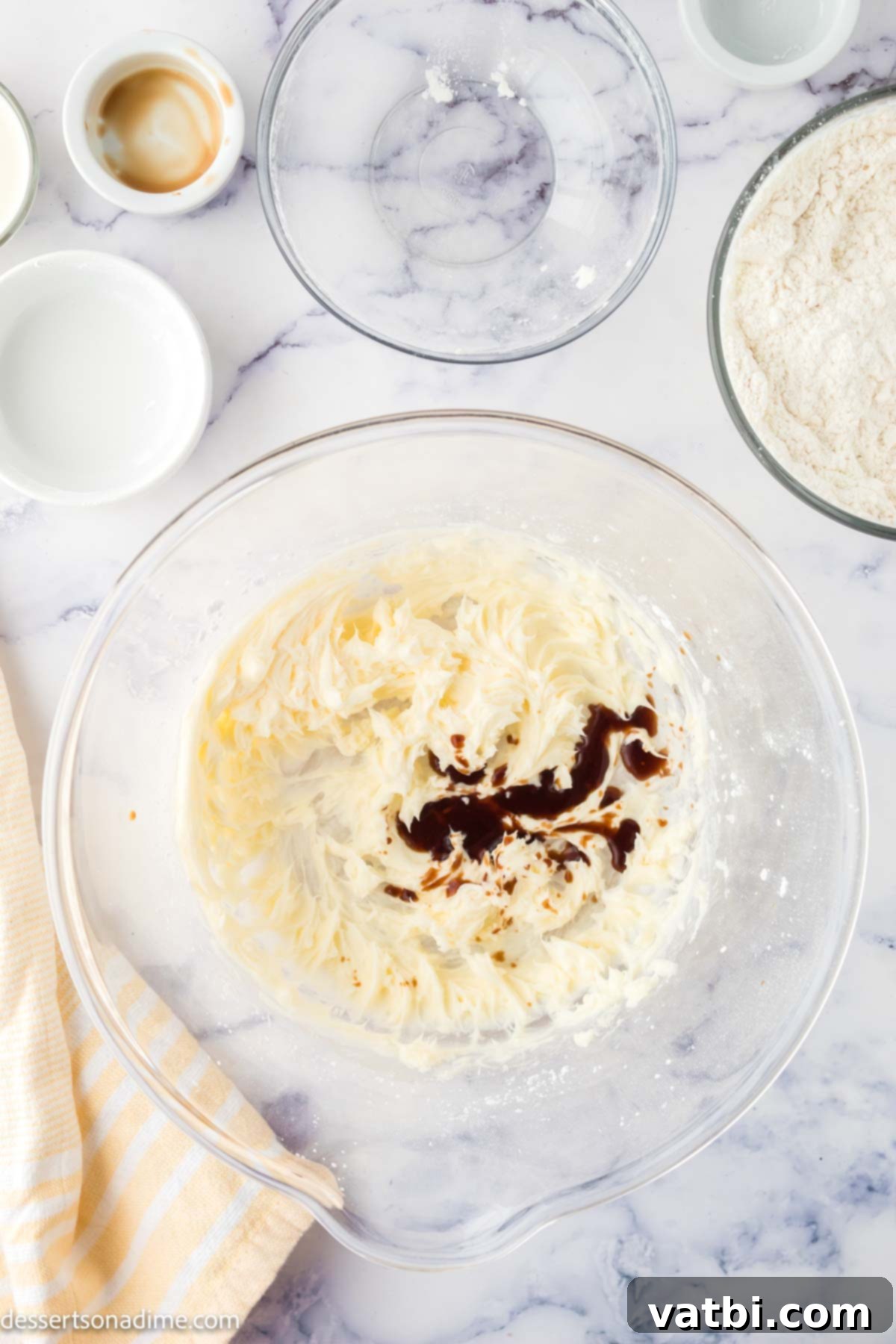
Step 3 – Cream Wet Ingredients: In a separate, larger mixing bowl, use a hand mixer or stand mixer to cream together the softened butter and sifted powdered sugar until the mixture is light and fluffy. This process incorporates air, contributing to the cookies’ tender crumb. Once creamed, mix in the vanilla extract until just combined.
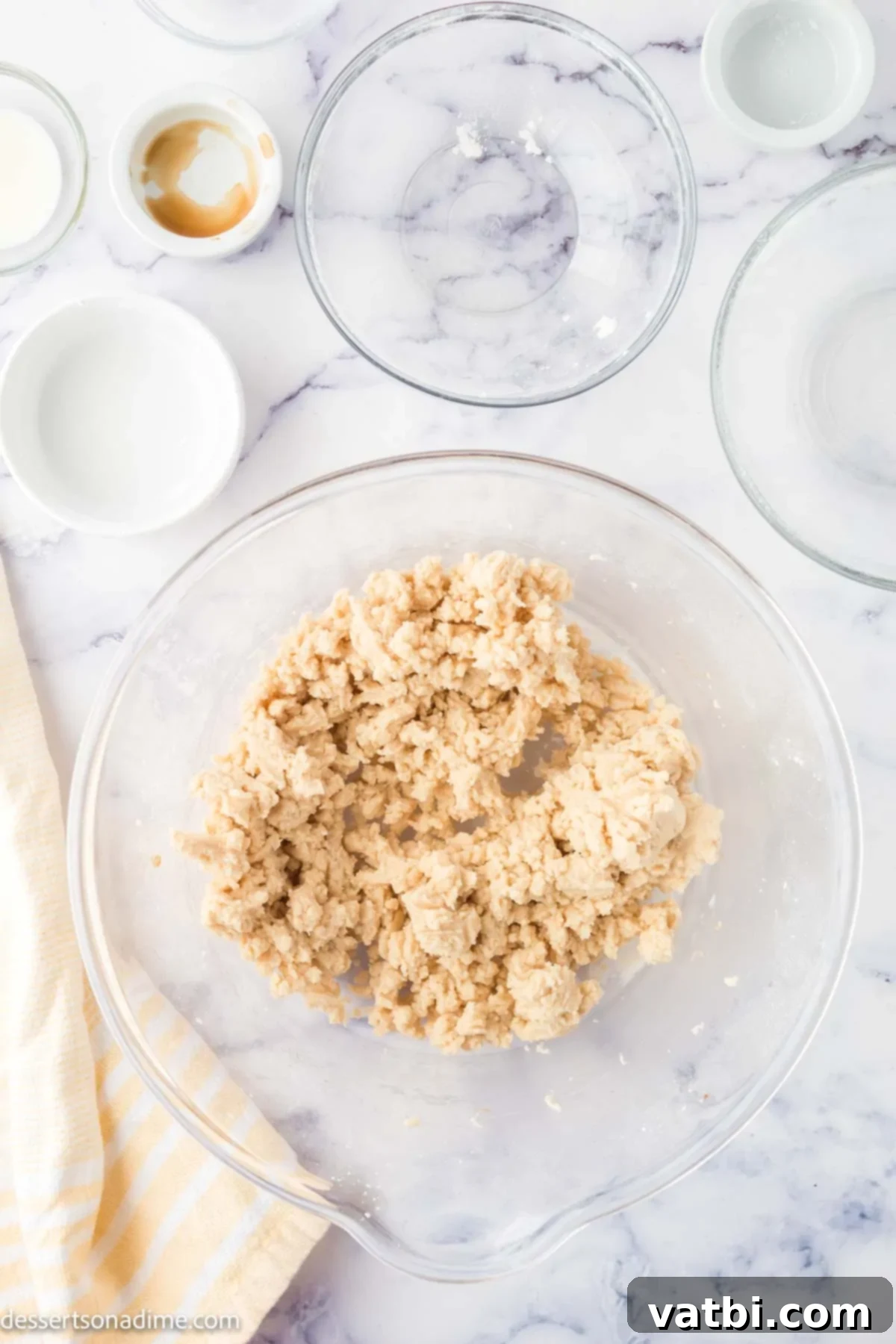
Step 4 – Combine Wet and Dry Mixtures: Gradually add the flour mixture into the butter mixture. Mix on low speed until the ingredients are just combined and no streaks of flour remain. Be careful not to overmix, as this can develop the gluten in the flour and result in tough cookies. Next, slowly add the milk, 1 tablespoon at a time, mixing until the cookie dough comes together and is no longer crumbly. You might not need all of the milk; stop when the dough is soft and pliable.
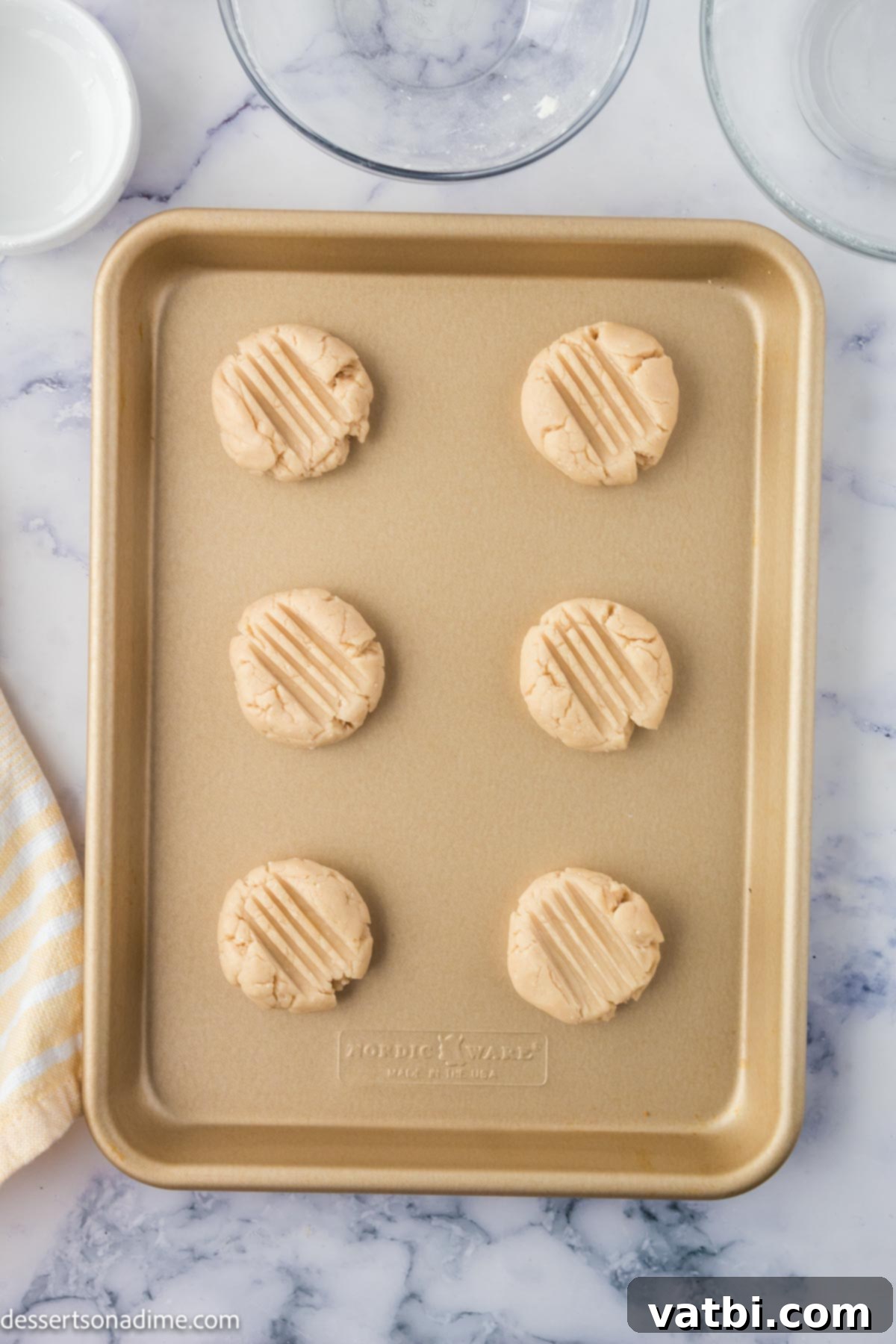
Step 5 – Shape and Bake: Use a cookie scoop to portion the dough onto baking sheets lined with parchment paper. This helps prevent sticking and makes cleanup easier. Gently flatten the top of each cookie with a fork to create a classic shortbread pattern. Bake for 10-12 minutes, or until the edges are just set and lightly golden. The centers should still look soft. Overbaking can lead to dry cookies.
Step 6 – Cool: Once baked, allow the cookies to rest on the baking sheets for 5-10 minutes. This crucial step allows them to set and firm up before moving. Attempting to move them too soon can cause them to crumble. After this initial cooling, transfer the cookies to a wire rack to cool completely. Enjoy your homemade custard cookies!
Storage and Freshness Tips
Proper storage is key to keeping your delicious custard cookies fresh and soft for as long as possible. Although they’re so tasty they might not last long!
Store any leftover baked cookies in an airtight container at room temperature. They will remain fresh and delicious for up to 1 week. To maintain their signature softness and moisture, you can place a piece of fresh bread (like a slice of plain sandwich bread) inside the container with the cookies. The cookies will absorb moisture from the bread, keeping them tender. Just be sure to replace the bread every couple of days to keep it fresh.
Avoid storing them in the refrigerator, as the cool, dry air can cause them to become hard and stale faster. If you need to keep them for longer, freezing is an excellent option.
Can You Freeze Custard Cookies?
Absolutely! Freezing is a fantastic way to preserve these delightful custard cookies, whether as unbaked dough or as finished baked treats. This means you can always have a batch ready for a quick dessert or unexpected guests.
- Freezing Unbaked Cookie Dough:
The cookie dough can be prepared in advance and frozen for up to a month. To do this effectively, scoop the cookie dough into individual balls and place them on a baking sheet lined with parchment paper. Flash freeze them for about 2 hours, or until they are solid. Once frozen solid, transfer the dough balls to a freezer-safe bag or airtight container. This prevents them from sticking together. When you’re ready to bake, simply place the frozen dough balls on a baking sheet and bake as normal. You may need to add an extra 2-4 minutes to the baking time, as they are starting from a frozen state.
- Freezing Baked Cookies:
You can also freeze already baked custard cookies. First, ensure the cookies are completely cooled to room temperature. Then, arrange them in a single layer on a baking sheet and flash freeze for about 1-2 hours until solid. Once frozen, transfer them to a freezer-safe bag or airtight container. For best results and to prevent them from sticking or getting damaged, place sheets of parchment paper in between layers of cookies. Baked custard cookies can be frozen for 2 to 3 months. To thaw, simply take them out of the freezer and let them come to room temperature on the counter for an hour or two. They will taste as fresh as the day they were baked!
For even more detailed tips on freezing various types of cookies, you can learn how to freeze cookies for baking.
Expert Pro Tips for Baking Success
Achieving bakery-quality custard cookies at home is easy with a few expert tips. These small adjustments can make a big difference in the final outcome of your delicious treats.
- All-Purpose Flour is Best: While other flours exist, all-purpose flour provides the ideal structure and tenderness for these cookies. Avoid using pastry flour, which has a lower protein content and might result in a more delicate, crumbly cookie than desired for this recipe. The specific texture of these custard cookies shines best with all-purpose flour.
- Use Real Butter: For the most authentic and rich flavor, always opt for real unsalted butter. Margarine contains more water and can lead to a different texture and a less flavorful cookie. The creamy, rich taste of butter is integral to the melt-in-your-mouth quality of these shortbread-style treats. Ensure your butter is at proper room temperature (softened but not melted) for best creaming results.
- Pure Vanilla Extract: Quality vanilla makes a noticeable difference. Pure vanilla extract offers a deeper, more nuanced flavor compared to imitation vanilla. If you desire a cookie with a pure white finish after baking (which can be visually appealing with custard cookies), consider using clear vanilla extract.
- Room Temperature Ingredients: This tip is crucial! Ensure your butter is genuinely at room temperature. Properly softened butter creams much more effectively with sugar, incorporating more air into the mixture. This aeration is key to a light, smooth dough and ultimately, tender, well-risen cookies. Cold butter will not combine well and can result in a dense dough.
- Lined Baking Trays: Always prepare your baking sheets by lining them with parchment paper or a silicone baking mat. This prevents the cookies from sticking, promotes even baking, and makes for incredibly easy cleanup. It also helps in transferring the delicate cookies once baked.
- Measure Precisely: Baking is a science, and precise measurements are vital. Too much flour can make your cookies dry and crumbly, while too much sugar or butter can cause them to spread excessively during baking. Use a kitchen scale for the most accuracy, or the spoon-and-level method for flour and firmly packed for powdered sugar.
- Make Dough in Advance: For convenience, the cookie dough can be prepared ahead of time. Wrap it tightly in plastic wrap and refrigerate for up to 5 days. Chilling the dough can also help to prevent spreading during baking, resulting in more defined cookie shapes. Just let it sit at room temperature for about 15-20 minutes to soften slightly before scooping and shaping.
- Allow to Set: After baking, resist the urge to immediately transfer the hot cookies from the baking tray. They are very delicate when warm. Allow them to set on the baking sheet for 5 to 10 minutes. This allows their structure to firm up, preventing them from crumbling or breaking when you move them to a cooling rack.
- Don’t Overbake: Custard cookies are best when they are just barely set. They should be lightly golden around the edges and still look soft in the center. Overbaking will lead to a dry, hard cookie, losing that desirable melt-in-your-mouth texture. Keep a close eye on them during the last few minutes of baking.

More Easy Cookie Recipes to Explore
If you’ve enjoyed making these simple yet delightful custard cookies, you’ll love these other easy-to-make cookie recipes. They’re perfect for satisfying your sweet tooth or sharing with family and friends.
- 3 Ingredient Sugar Cookies: Discover the magic of baking with minimal ingredients. These sugar cookies are incredibly simple to make and perfect for decorating for any occasion.
- Soft Gingerbread Cookies Recipe: Warm spices and a tender texture make these gingerbread cookies a comforting treat, especially around the holidays.
- Pumpkin Pie Cookies Recipe: Enjoy all the flavors of pumpkin pie in a convenient, bite-sized cookie form. A perfect autumn dessert!
- Cinnamon Roll Cookies: Get the irresistible taste of cinnamon rolls transformed into a soft, sweet cookie, complete with a delicious glaze.
- Peanut Butter Cookies Recipe: A classic for a reason! These chewy peanut butter cookies are packed with flavor and incredibly satisfying.
Don’t wait any longer to try these absolutely delicious Custard Cookies. They are sure to impress with their unique flavor and tender texture. We encourage you to bake a batch today and experience the delight for yourself. Once you do, please take a moment to leave a comment and let us know what you think – we love hearing from you!
Pin
Custard Cookies Recipe
Ingredients
- 1.5 cups All Purpose Flour
- 1/4 cup Custard Powder
- 1/2 tsp Baking Powder
- 1/4 tsp Salt
- 1/2 cup Butter softened at room temperature
- 1/2 cup Powdered Sugar
- 1 tsp Vanilla Extract
- 2-3 Tbsp Milk
Instructions
-
Preheat the oven to 350 degrees F (175°C).
-
In a medium size mixing bowl, stir together the flour, custard powder, salt and baking powder.
-
In a large mixing bowl, cream together the butter and powdered sugar with a hand held mixer or stand up mixer until light and fluffy. Then add in the vanilla extract.
-
Slowly add the flour mixture into the butter mixture. Mix it in on low speed until just combined. Then slowly add in the milk, 1 tablespoon at a time, until the cookie dough sticks together and is not crumbly (you may not need all the milk).
-
Use a cookie scoop to place the cookie dough on baking sheets lined with parchment paper and use a fork to gently flatten the top of each of the cookies.
-
Bake the cookies for 10-12 minutes until the edges are set and lightly golden. Let the cookies sit on the baking sheets for 5-10 minutes to firm up, and then move them to wire racks to cool completely.
-
Your delicious custard cookies are now ready to serve and enjoy!
Recipe Notes
Nutrition Facts
Pin This Now to Remember It Later
Pin Recipe
